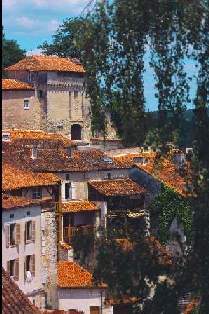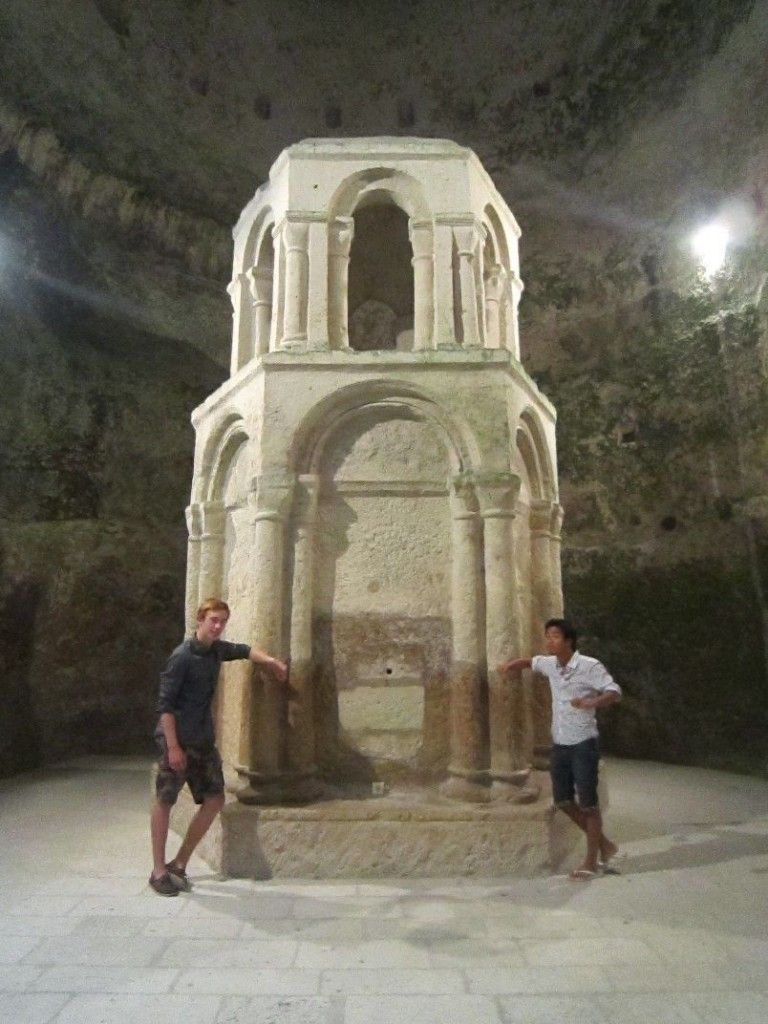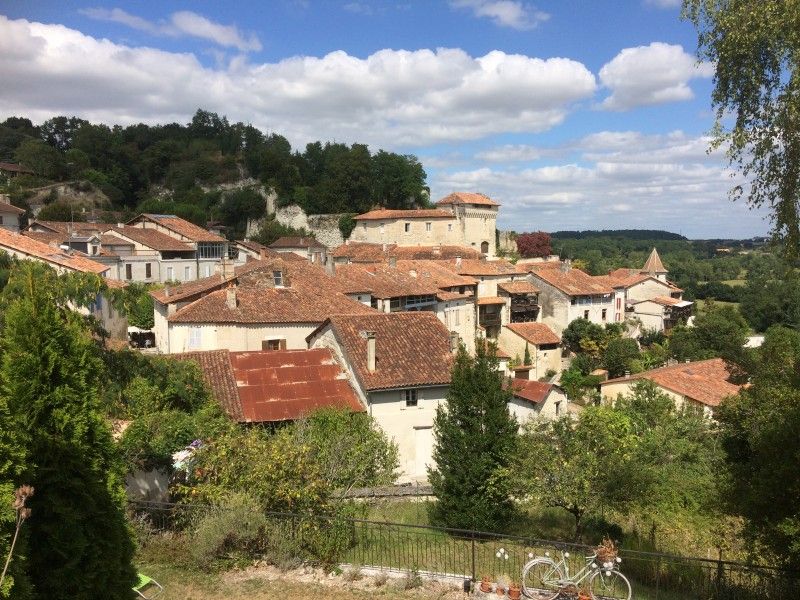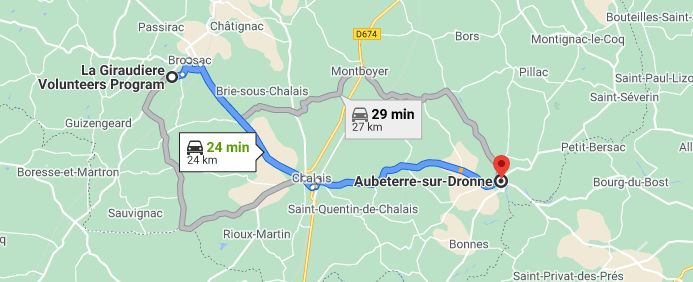The articles you find listed throughout our website were written by Les Amis De La Giraudière, or in English, “the friends of La Giraudiere”, also contributions from volunteers and interns who have participated in the different programs at La Giraudiere. We hope you enjoy.
Aubeterre Sur Dronne
Article about the village Aubeterre sur Dronne which is situated upon the Dronne river, this village was once winner of the “Plus Beaux Villages” de France and famous for its monolithic église of St Jean.
Aubeterre-sur-Dronne is a village of many parts. On the one hand it can rightfully claim the distinction of one of the “Plus Beaux Villages” in France, but it would be wrong to regard Aubeterre as nothing more than an amphitheatre of characterful and well- presented houses rising out of the chalk hillsides high above a bend in the River Dronne.

Yes, it’s true that at every turn in the steeply sloping cobbled streets and alleys a further vista opens up, offering endless opportunities to capture that one unique photographic angle that every other tourist has missed, but even the lush green backdrop, appliqued with what seems a quilt work of typically Charentais tradition, is not the final statement Aubeterre has to make.
Oh no, it goes much deeper and richer, for in the historical stakes, Aubeterre is no lightweight, its hidden secret nestling like an unborn foetus, the monolithic église of St Jean, the largest of Europe’s subterranean churches.

This enormous cavern was one of many which probably began as caves used by hermits in search of solitude and around which communities gradually developed. Over the centuries churches such as these were enlarged and in the case of St Jean’s it was the Benedictine monks who were attributed with much of this mammoth task. In 1961when a lorry collapsed part of the road, a further underground cavern was discovered which was reputedly used for sacrifice and baptism with bull’s blood in celebration of Mithras, although this ceased in AD 395 when the chamber was adapted by monks for Christian full-immersion baptisms and burials.
Between the 4th and 9th centuries a deep cross was carved into the font. The full grandeur of the space needs to be seen to be fully appreciated. In dimension it is 27 metres long, 16 metres wide and 20 metres high, supported by the two remaining hexagonal pillars. At one end of the main nave is a Romanesque hexagonal monument carved from the solid rock. This two-tier structure is 6metres high and 3 metres in diameter and is believed to copy the architecture of the tomb of Christ after the crucifixion.

In 1848 it was found to house four coffins, two of which contained the remains of children. The present floor of the nave covers what was once a cemetery where monks and worshipers were lain to rest in sarcophagi hewn out of the stone.
To the left of the current entrance a sarcophagus housing over 80 graves, some believed to be of Merovingian origin, has been left uncovered.
The high circular gallery, accessed by a stone staircase, contains a walled-up aperture which would have been the original entry to the church, and a further tunnel leads to the chateau above, although it is debateable as to whether this was used for lords to attend services, or as a drainage run-off, leading rainwater away from the chateau.

Near the current entrance to the church is a further set of steps leading down to the crypt which is lined with cells where monks would come to pray. St Jean’s is noted as having received numerous important visitors over time. In the 16th century both the then King of France Francois I, and John Calvin were attributed as having visited.
At the time of the Religious Wars part of Aubeterre was destroyed, and rather ………….ly, the collegiate Church of St Jacques was all but demolished, with only the Romanesque façade remaining to this day, although in the 17th century it was rebuilt. At the time of the Revolution in 1789 like numerous other religious buildings, St Jean’s was used in the production of gunpowder and the salt-peter oven is still visible in the church to this day.

Article written and submitted by Ann Williams whilst staying at La Giraudiere during her volunteers working holiday in May 2008 any duplication of this article is forbidden without prior permission from lagiraudiere.com
The Images and photos of Aubeterre Village and the Monolithic church are the property of Patrick Cockell who has kindly consented to us publishing them but anyone wishing to copy or use the images should contact Patrick by emailing us at info@lagiraudiere.com Further images of Aubeterre together with further photos from Patrick can be seen within our image section at Images of Aubeterre

How would you like to have your own page upon our website? You can how you say? simply by writing an article and sending it to us together with two photographs that relate to the article. La Giraudiere is a well-respected website among its visitors and also by the search engines that regularly visit.

